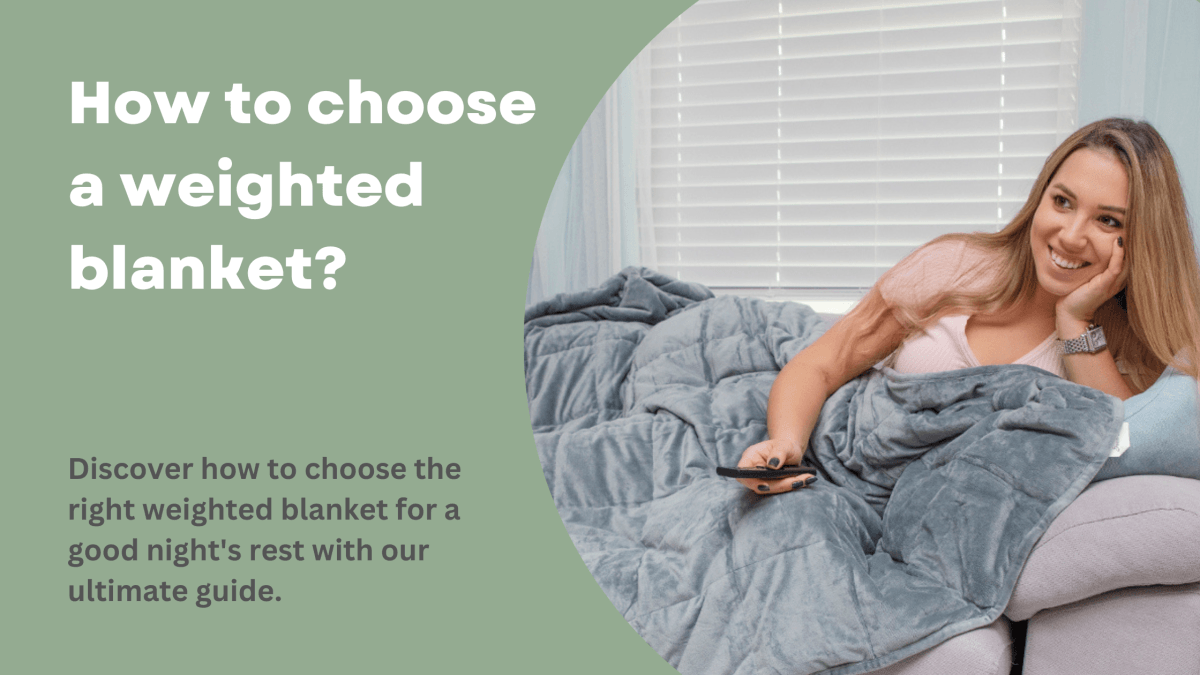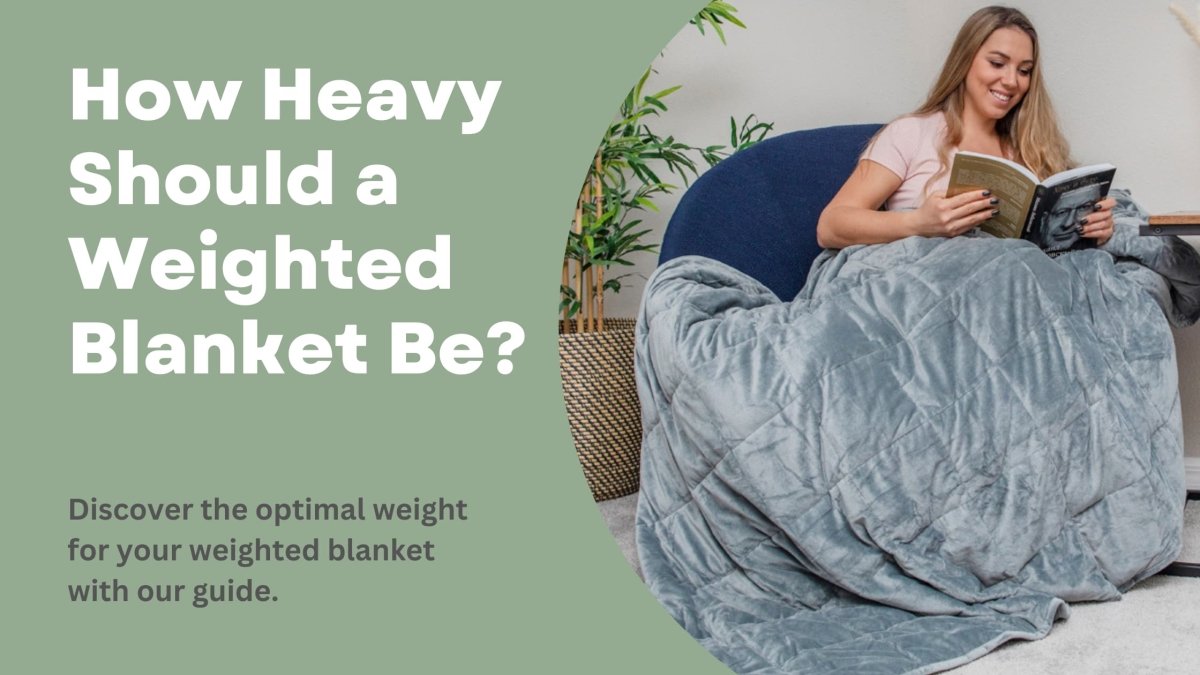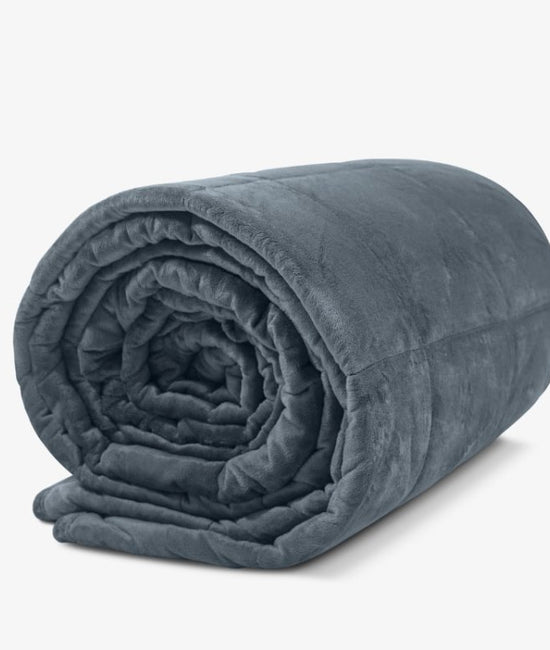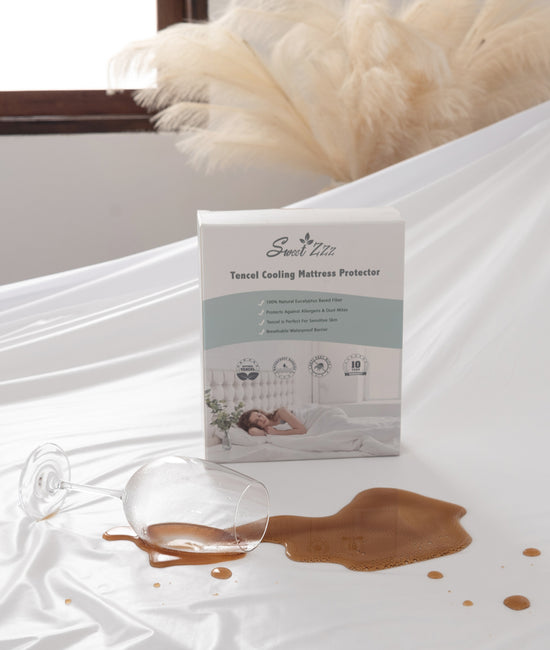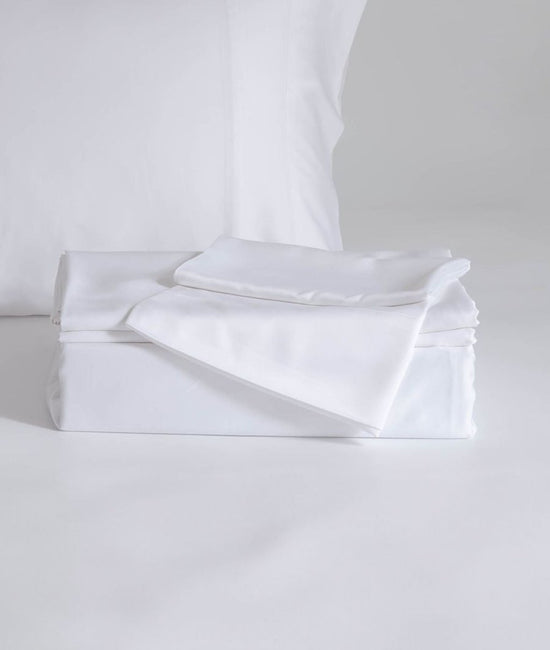How to choose a weighted blanket?
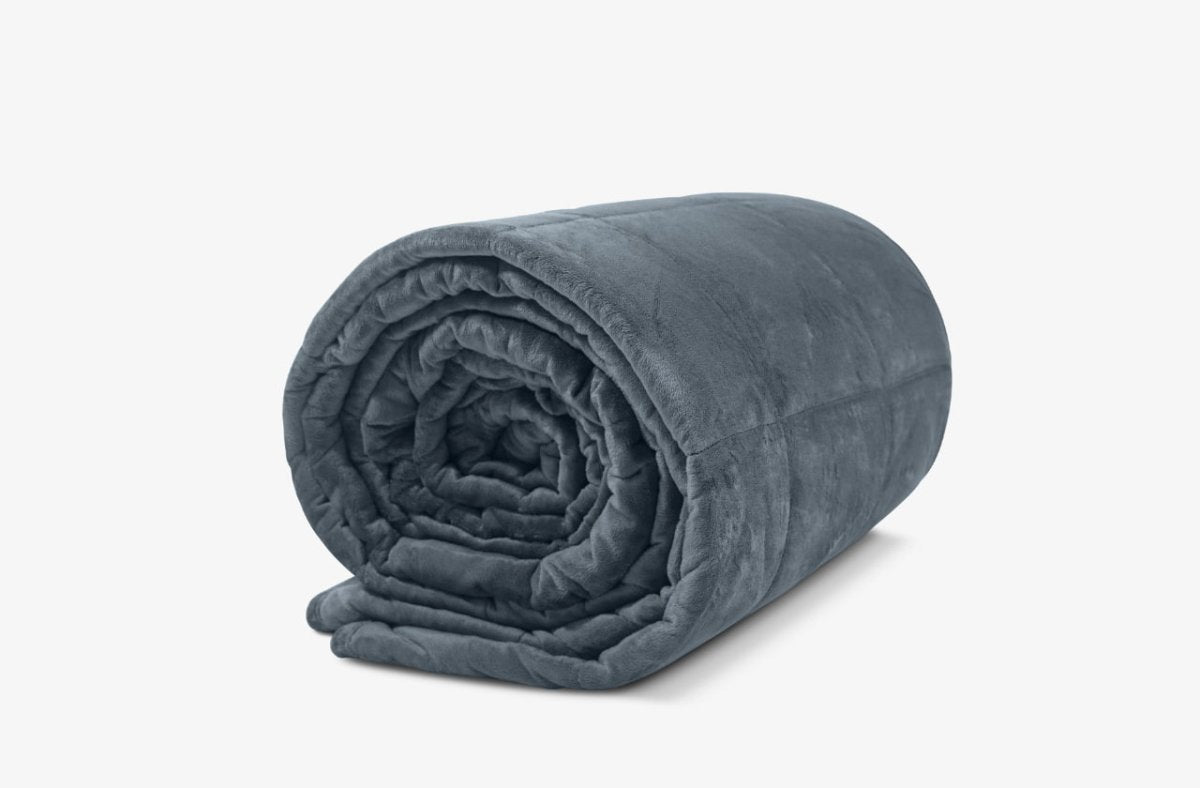
Weighted blankets are helping many people get a good night’s rest. From celebrities to people suffering from various sleep disorders. People can’t get enough of the calming benefits of a weighted blanket. However, a common question that keeps coming up is “What size weighted blanket should I get?”
That’s what we tackle in this guide for how to choose a weighted blanket. The guide details what a weighted blanket is, how it works, and pays particular emphasis on how to pick the right weight including using a weighted blanket weight chart.
But first, let's find out what a weighted blanket is…
What is a weighted blanket?
A weighted blanket is a heavy blanket that contains small objects that boosts its weight. These objects are mostly glass beads or plastic pellets. They help the blanket provide stress relief and create a sense of calm through a therapeutic process known as Deep Touch Pressure (DTP).
Though weighted blankets started trending recently, they have been in use since 1999. They are used by occupational therapists (OT) to help with anxiety, sleep disorders, ADHD, and Autism.
The Deep Touch Pressure therapy provided by weighted blankets helps relieve stress and create a sense of calm.
How it works
Deep pressure stimulation works like a massage. The targeted increase in pressure helps lessen pain, relieve anxiety, and improve mood. Pressure on the body triggers the brain to produce serotonin, the chemical responsible for the “Happy” feeling.
Wrapping yourself in a weighted blanket is equated to being hugged. This brings a soothing sensation that lowers your heartbeat, making you calmer.
Now that we know what a weighted blanket is and how it works, let us look at how to select the right size.
What size weighted blanket should I get?
Generally, experts recommend getting a blanket that is 10% of your total body weight. This, however, differs a bit with different age groups. Here is a breakdown of how to choose the right weight for each age group.
Weighted blankets for children
Doctors and OTs are known to prescribe weighted blankets for kids who have certain disorders such as Sensory Processing Disorder and Autism Spectrum Disorder. Just like adults, the 10% rules also work for kids.
Experts recommend a weighted blanket to be 10% of the total body weight of the child plus a pound or two. However, there are safety issues to observe when using a weighted blanket on a child.
- You should never use a weighted blanket on a child aged 2 years and below. At this age, the child’s motor skills and capacity to use the blanket are not well developed. The child will not be able to move the blanket on its own.
- All children no matter the age must be able to move the blanket on their own. Ensure that the blanket does not cover the head or neck at any time.
- Don't force a weighted blanket on a child. They should want to use it. Remember the blanket should help kids feel calmer, so, if the use of the blanket causes them to be anxious then it beats the purpose.
- Don’t use your adult weighted blanket on your child.
Here is a weighted blanket- weight chart for kids
| Weight | Blanket Weight |
| 50 - 60 lbs | 5 lbs |
| 60 - 70 lbs | 6 lbs |
| 70 - 80 lbs | 7 lbs |
| 80 - 90 lbs | 8 lbs |
| 90 - 100 lbs | 9 lbs |
| 100 - 110 lbs | 10 lbs |
| 110 - 120 lbs | 11 lbs |
| 120 - 130 lbs | 12 lbs |
| 130 - 140 lbs | 13 lbs |
Weighted blanket for Adults
Adults are recommended to use a weighted blanket that is about 10% of their total body weight. However, this is not always cast in stone. For some, a blanket that is 10% of their weight will feel heavier or lighter.
If you use a weighted blanket and feel the weight is too much, pick a lighter size blanket. On the other hand, some people will feel that the blanket is too light for them, in such a case opt for the next higher size.
This variation comes about due to an individual’s body size and frame. Experts say that if you have a lighter frame, then you can opt for a blanket that is 1-2 pounds lighter and vice versa.
With that said, however, most weighted blankets in the market come in 5,10,15,20, and 25lbs sizes. So, what happens if you are in-between blanket sizes? That's what we look at next.
Choosing a weighted blanket when you are in between standard weighted blanket sizes
Most weighted blanket manufacturers produce standard size weighted blankets. This comes in weights of 10,15,20, and 25 lbs. While the 10% rule is great, what happens when you fall in between the available blanket sizes? Experts recommend adding one or two pounds to your ideal blanket weight.
This notion is also backed by a study that found out going above the 10% body weight standard, is still comfortable and calming. So, for example, if you weigh 125lbs you can comfortably use a 15lb blanket.
Weighted blanket for couples
If you share a bed with your significant other, or any other family member, you can still use a weighted blanket. The key here is to ensure that both of you are comfortable using a weighted blanket and do not differ in size drastically.
For example, an adult cannot share a 20lb weighted blanket with a child who should use a 5lb blanket. The opposite is also true, an adult who weighs 200lbs cannot benefit from a 5lb child’s blanket.
If both of you are comfortable using a weighted blanket and your weights are close. You can choose a blanket that is the average of both your weights.
To help you choose the right blanket here is a weighted blanket weight chart:
| Adult weight | Blanket weight |
| 80-100 lbs | 8-10lbs |
| 100-150 lbs | 10-15lbs |
| 150-200 lbs | 15-20lbs |
| 200 lbs and above | 20-25lbs |
Other factors to consider when choosing a weighted blanket
Size
It's important to note that weighted blankets are made with the human body needs in mind and not the bed's needs. As such don’t buy weighted blankets based by bed size but rather your body size.
For the weighted blanket to work it needs to correspond with your body size. As a general rule of thumb, you should get a blanket size that fits the width and length of your body for maximum effect. The blanket should at least cover you from the chin to the feet without draping over the edges of the bed, to avoid the blanket from falling over.
Although weighted blankets can be found in common bed sizes like queen, king, they will always be smaller than standard blanket sizes. This is to ensure you experience the therapeutic benefits of the blanket.
Very large weighted blankets are ineffective. They tend to drape over the edges of the bed. When gravity is applied the weight distribution becomes imbalanced and you miss the soothing sensation of the blanket.
Here is a chart to help you pick the right length of a weighted blanket.
| Your Height | Weighted Blanket’s Length |
| 5’ - 5’4" | 50” to 56” |
| 5’4” - 5’8” | 54” to 60” |
| 5’8” - 6’2” | 58” to 66” |
| 6’2” + | 64” + |
Materials
Cover materials
Due to the heavy nature of weighted blankets, it’s always advisable to get one made of comfortable breathable materials. Cotton and bamboo are great materials for weighted blankets and most top brands go for these two options.
Both materials are soft and breathable, which ensures that though the blanket is heavy it won't cause you to sleep hot.
Filler materials
To make a weighted blanket heavy, small objects such as glass beads, sand, plastic pellets, steel balls, stones, and dried foodstuffs such as rice are used. Materials such as sand, rice, and stones are used to make cheaper blankets because they are cheap to acquire. However, they make poor quality weighted blankets that are uncomfortable and less durable.
For the best weight distribution, most manufacturers go for glass beads. They are smaller than sand particles and provide even weight distribution.
To hold the filler items in place and allow for the perfect weight distribution, some manufacturers add cotton or polyester padding in the blankets. Cotton is of course the better material because it’s breathable and natural.
Ease of Maintenance
Weighted blankets are not as easy to clean as regular blankets. Their size makes them difficult to handle even using a washer. However, to keep this blankets cleaner for longer some manufacturers add ties to the blankets so that they can be used with removable duvet covers. Look for such blankets for peace of mind.
Warranty
Weighted blankets are a bit costlier than regular blankets. This is due to the associated costs of production and the numerous benefits the blankets present. As such, it’s important to choose one that has a good warranty.
A good warranty covers manufacturer’s defects and any abnormal defects within the set warranty period. Most warranties cover a period of 3 to 5 years.
Conclusion
Hopefully, this guide on how to choose a weighted blanket answers the question “What size weighted blanket should I get?”. Remember the general rule of thumb is to get a blanket that weighs 10% of your total body weight. From there you can adjust up or down as you see fit.
Now that you know what to look for in a weighted blanket and how to choose the right size, here is one that ticks all the right boxes.


